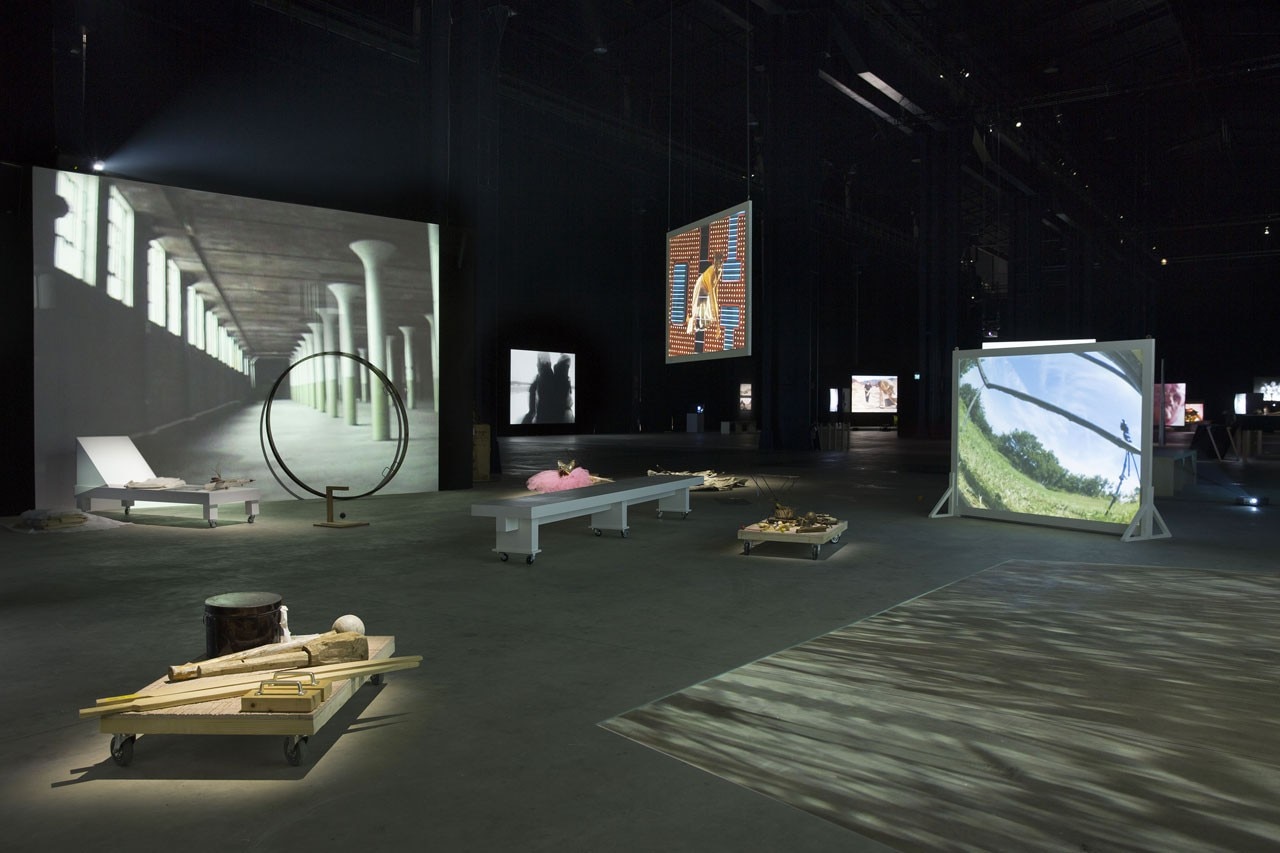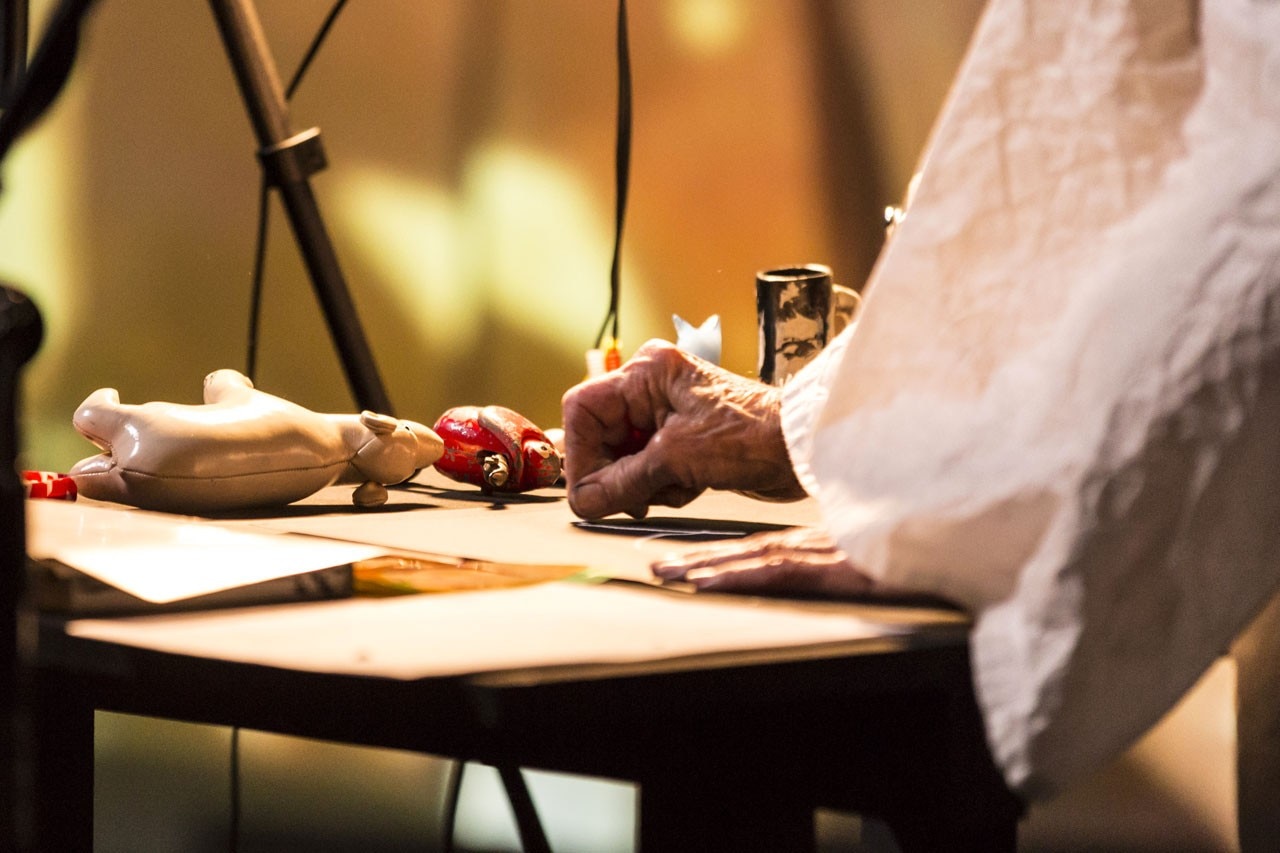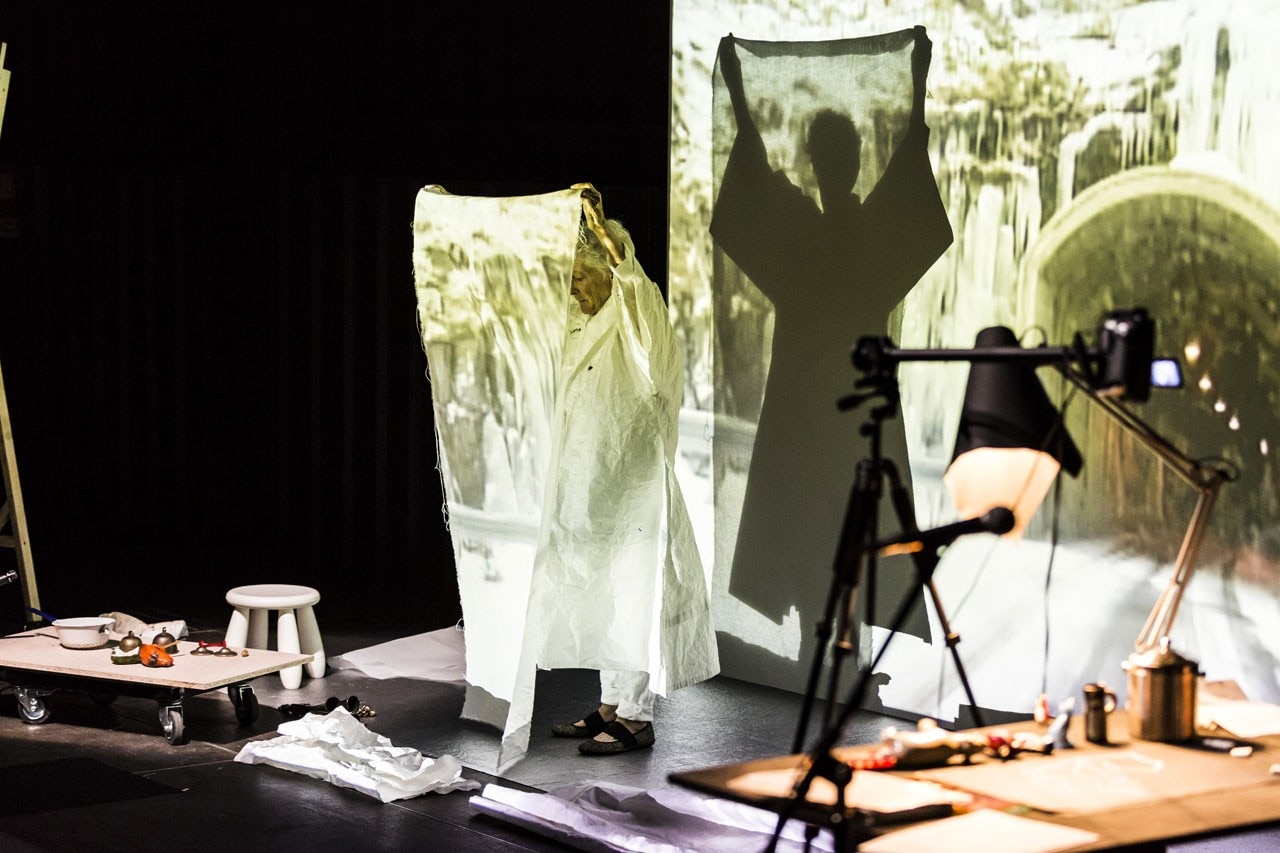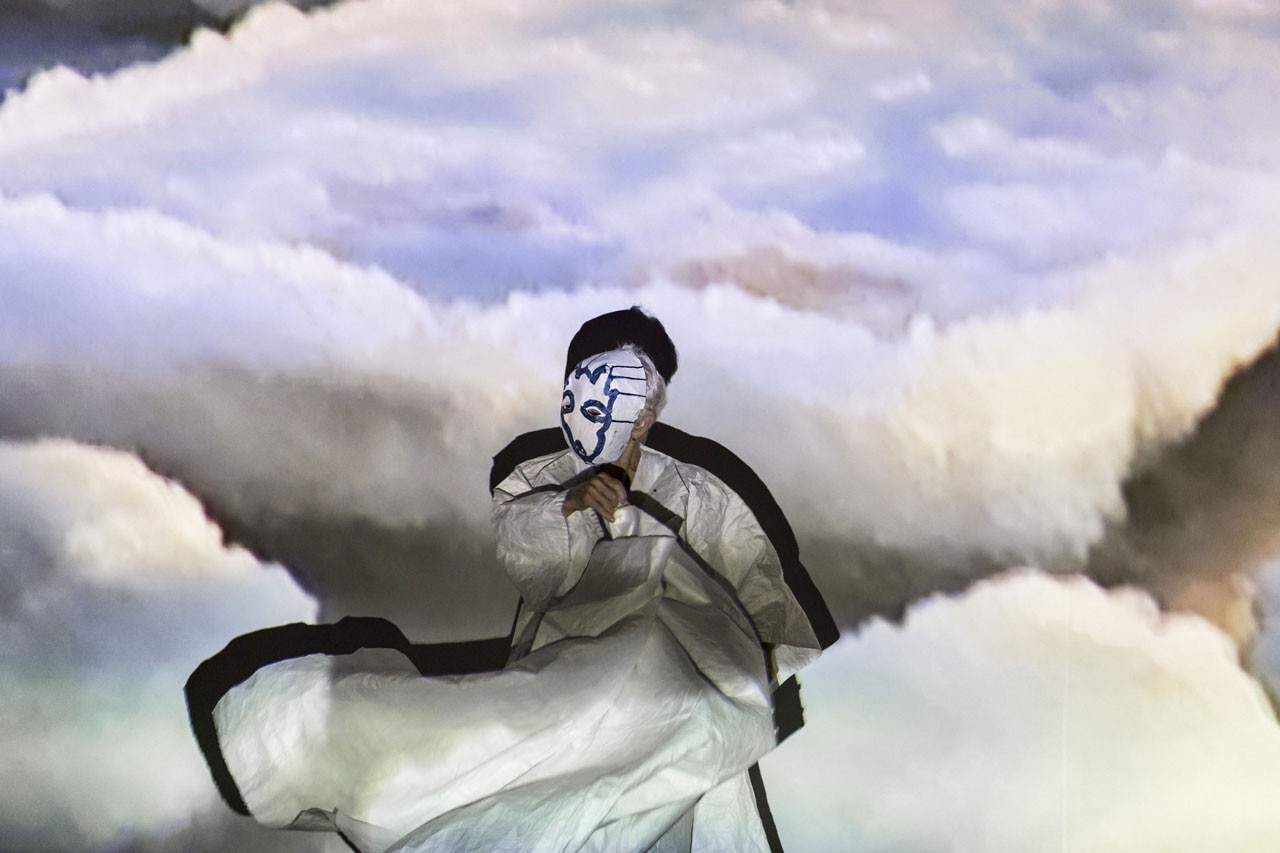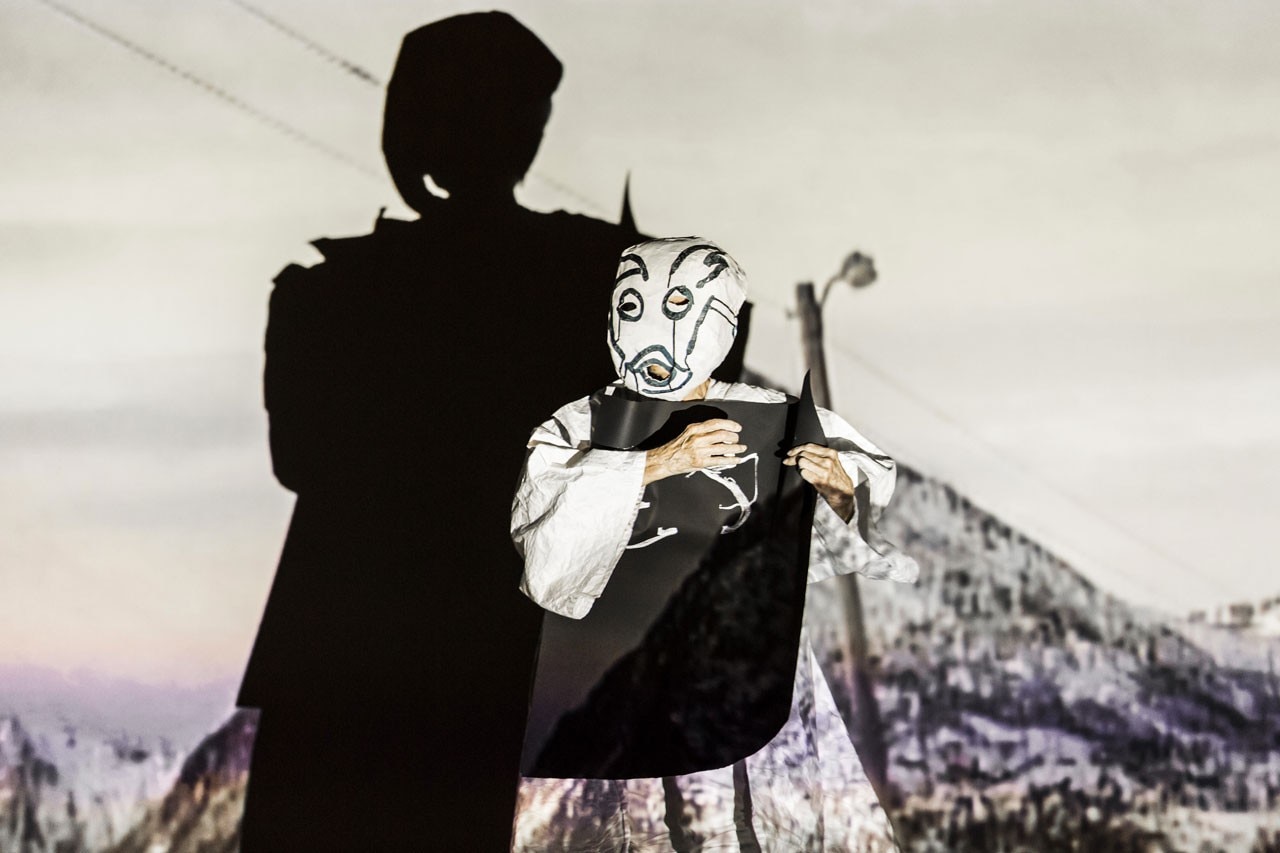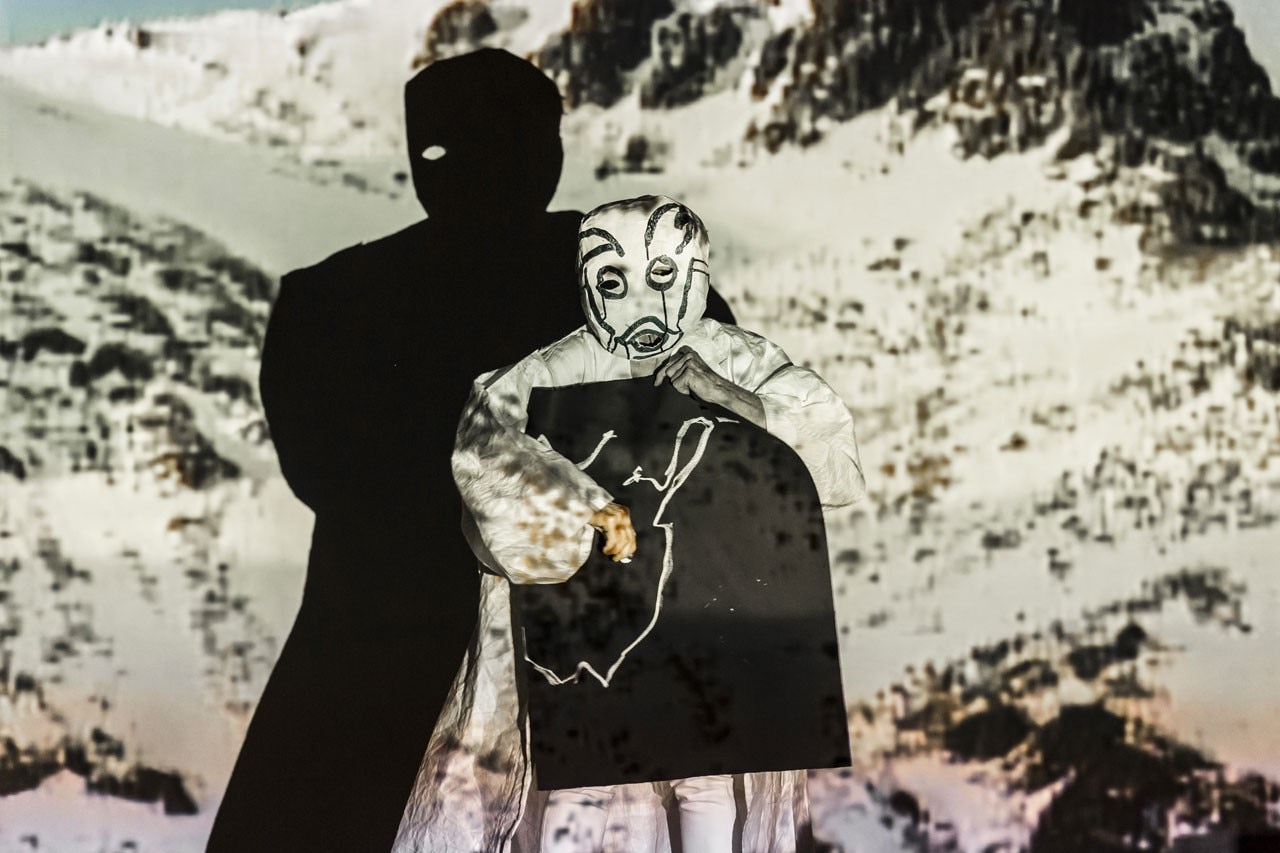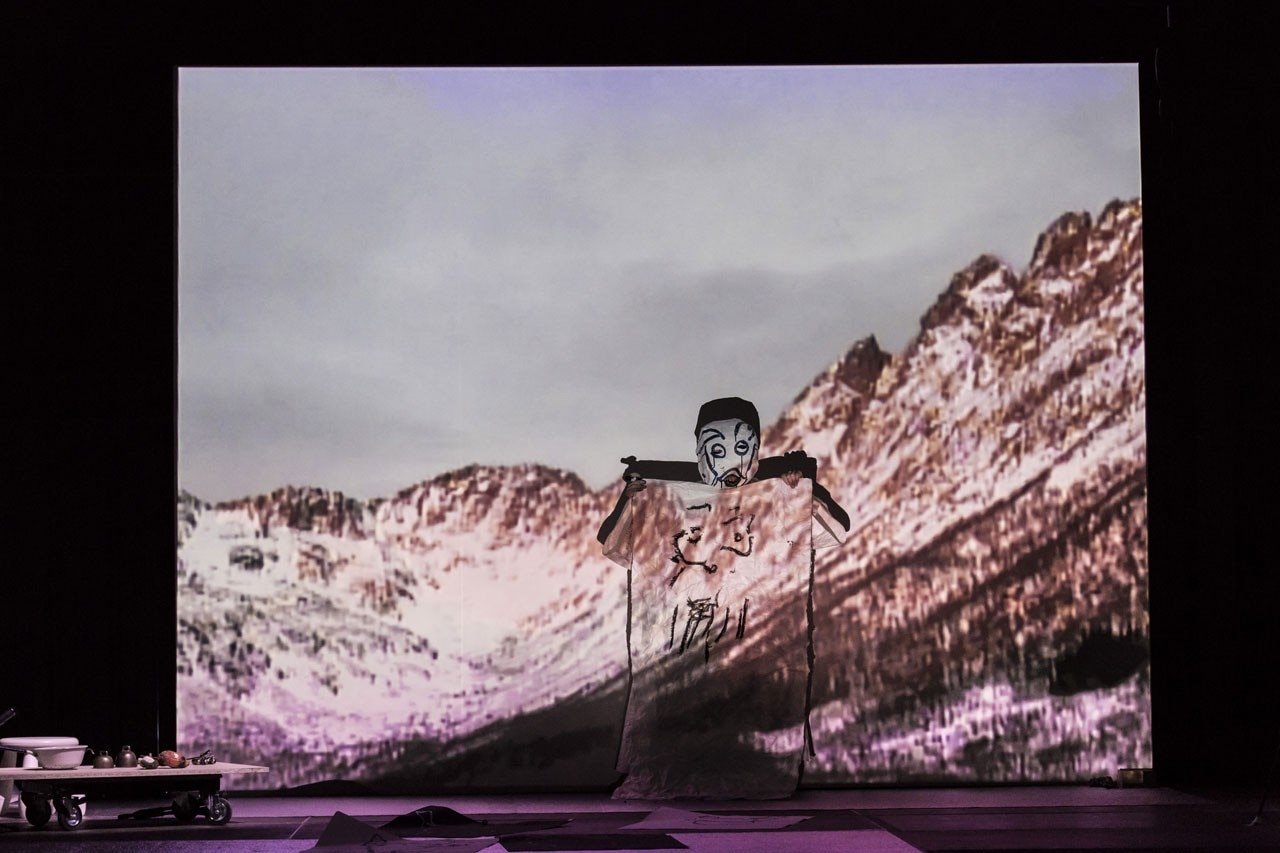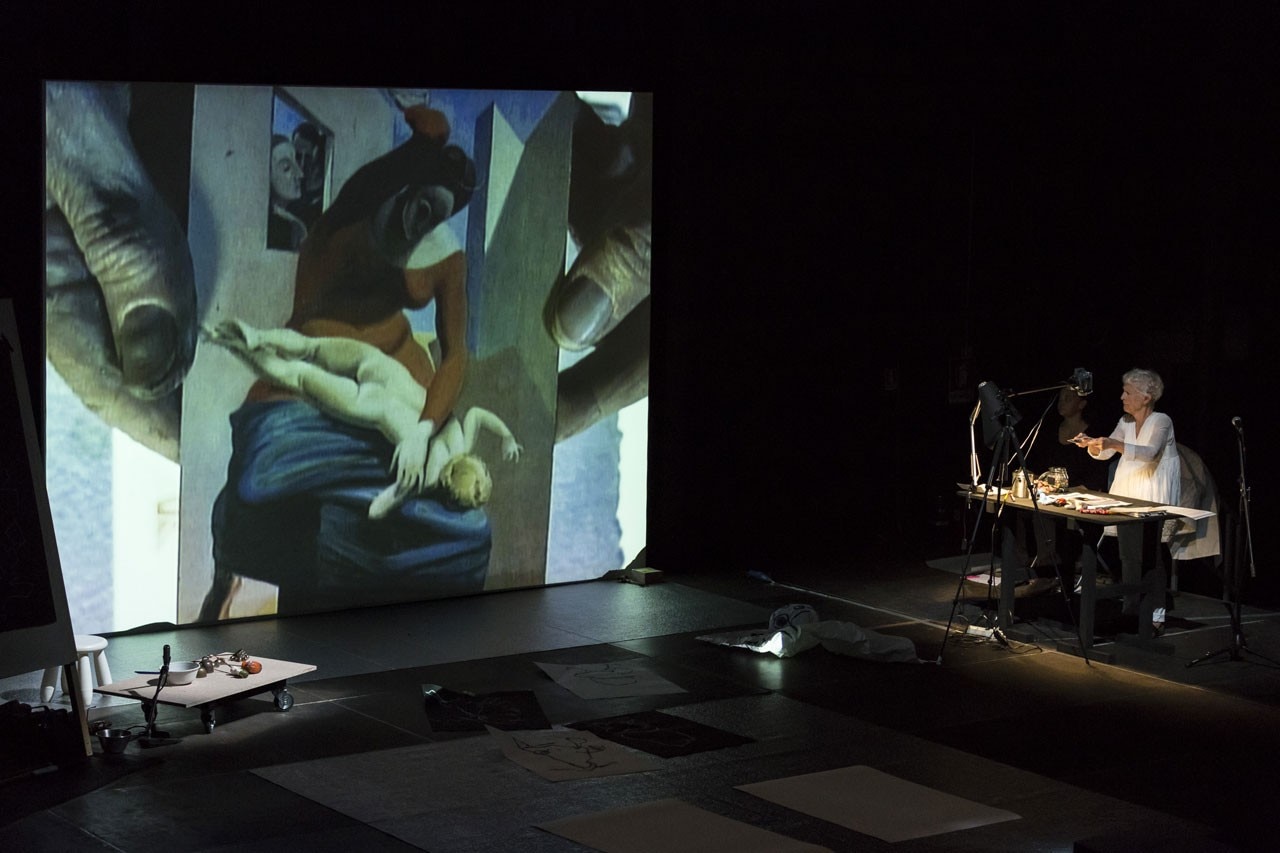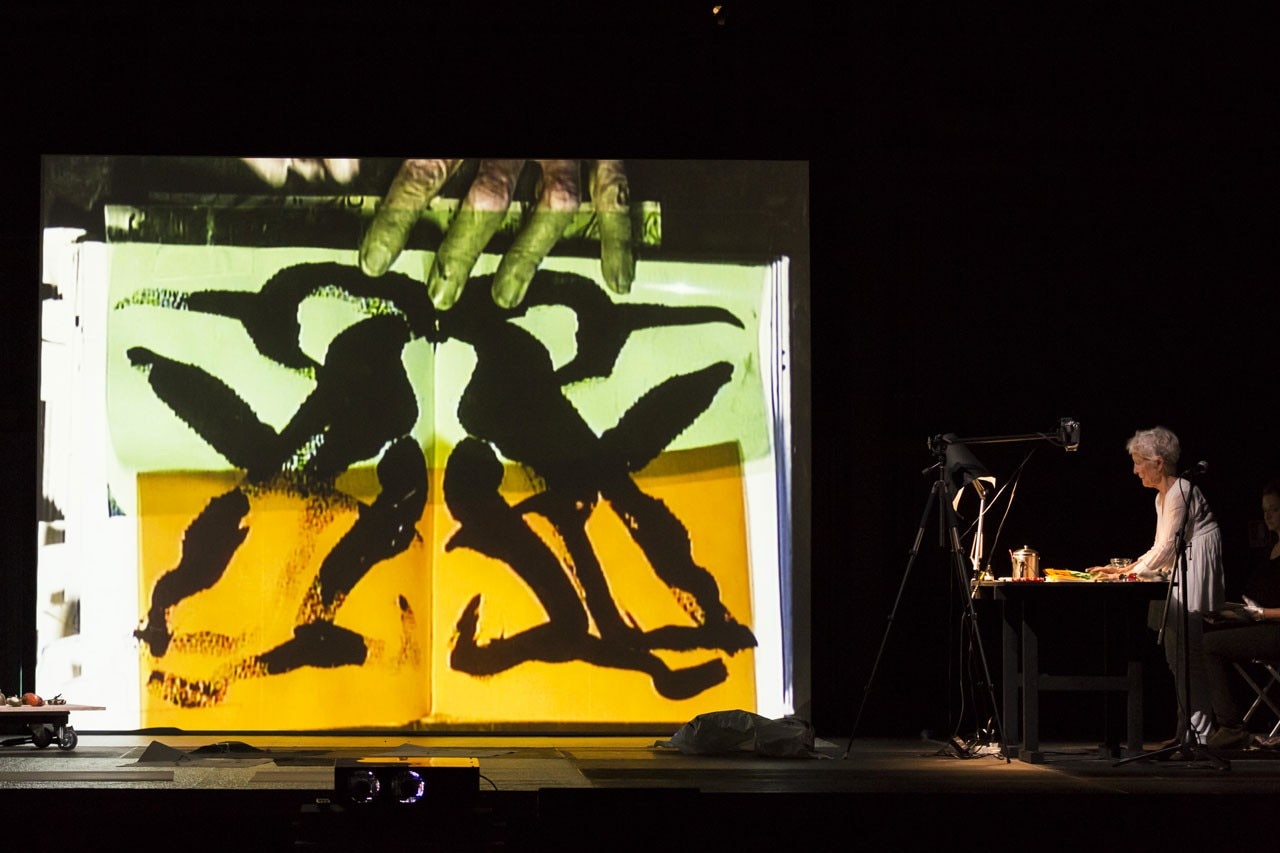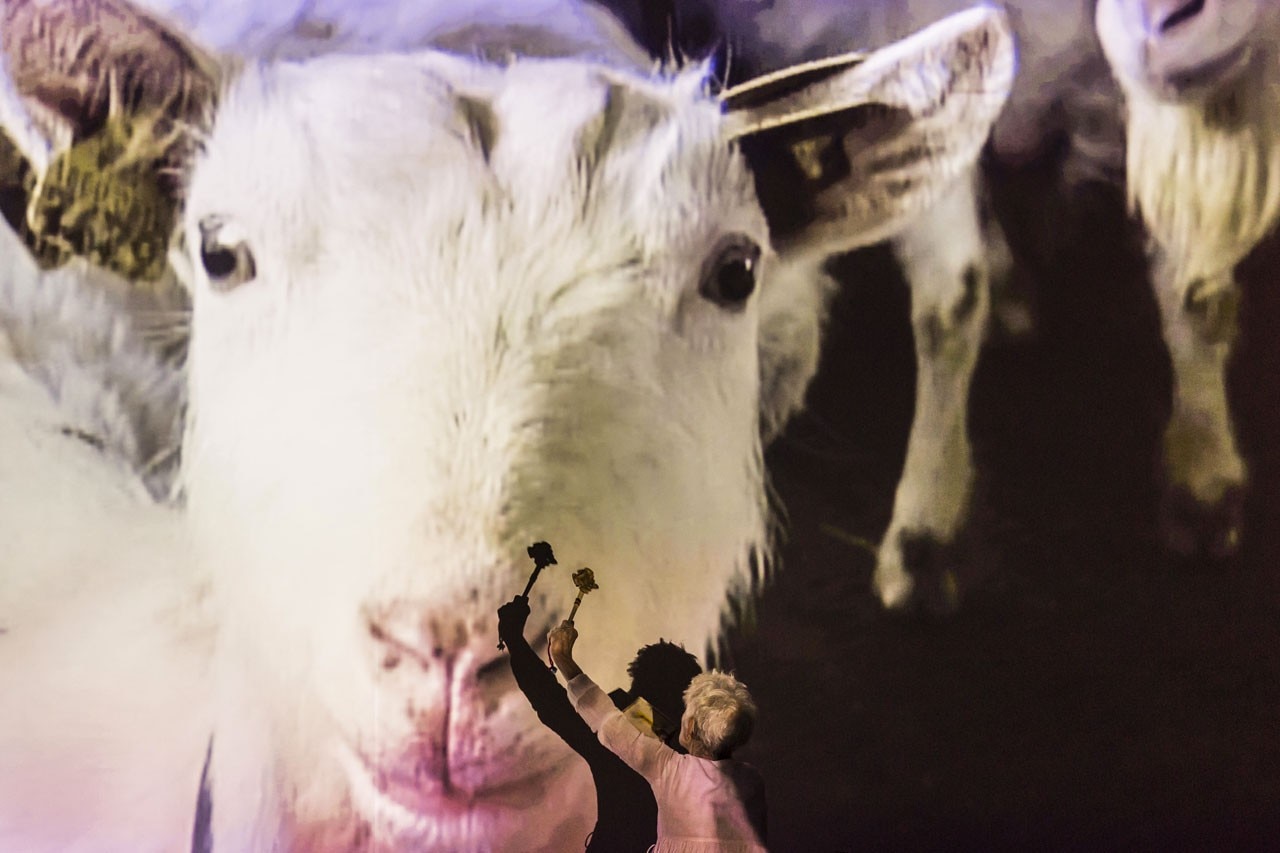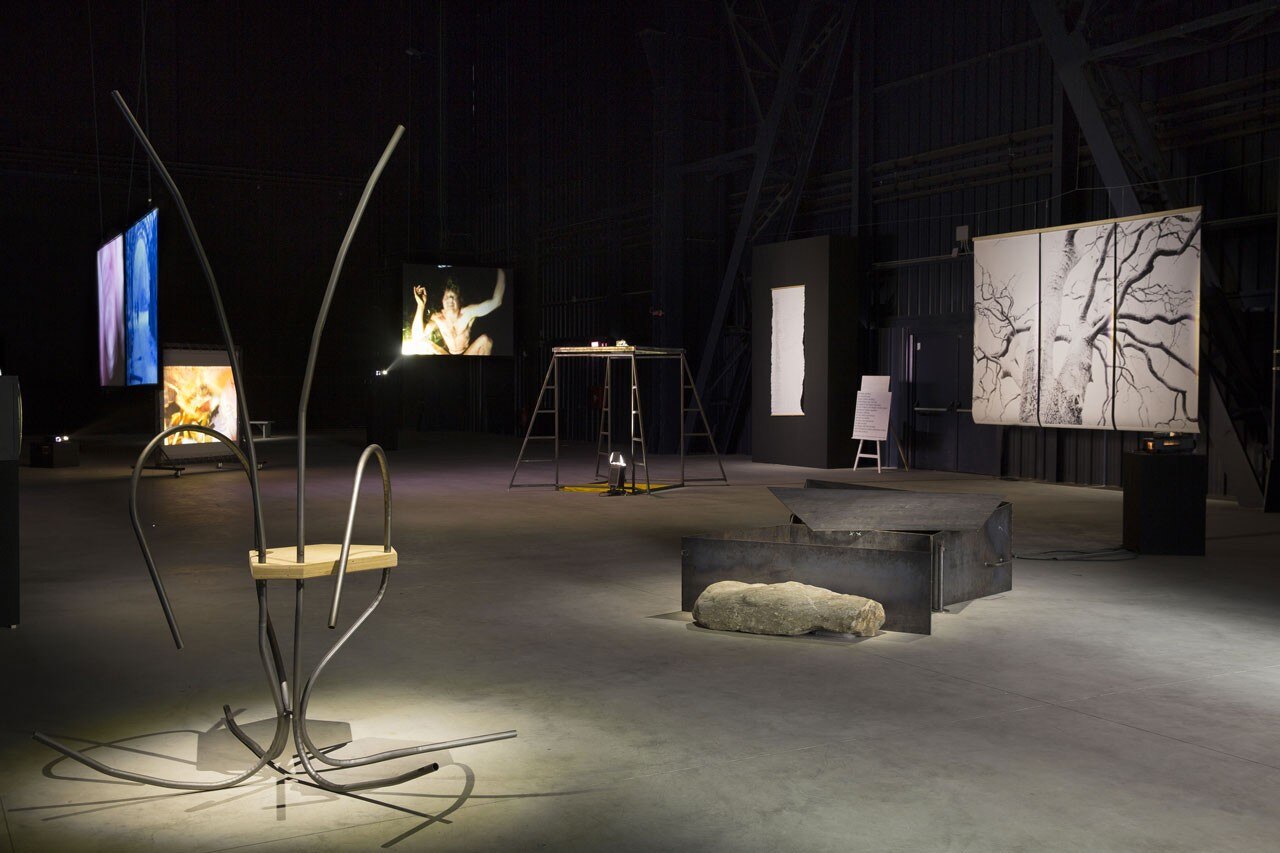
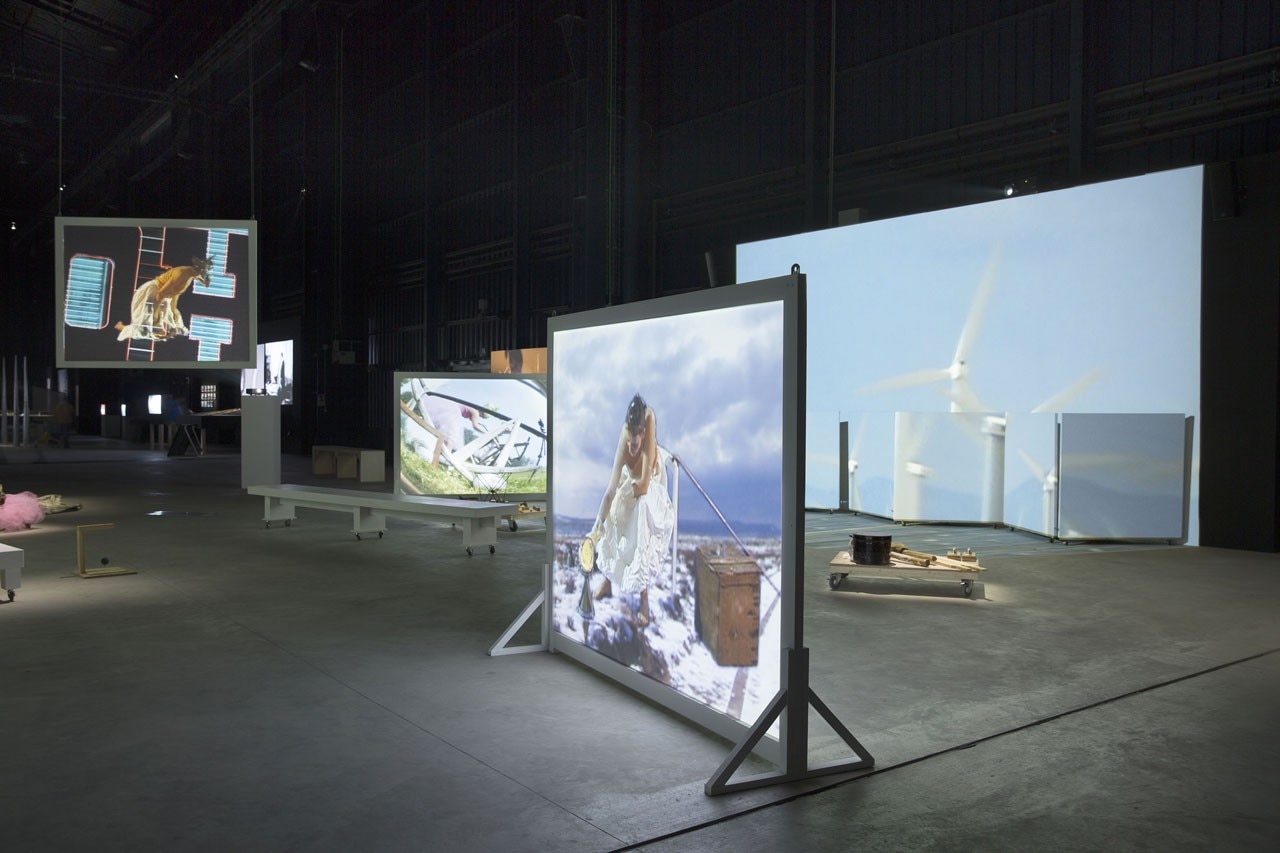
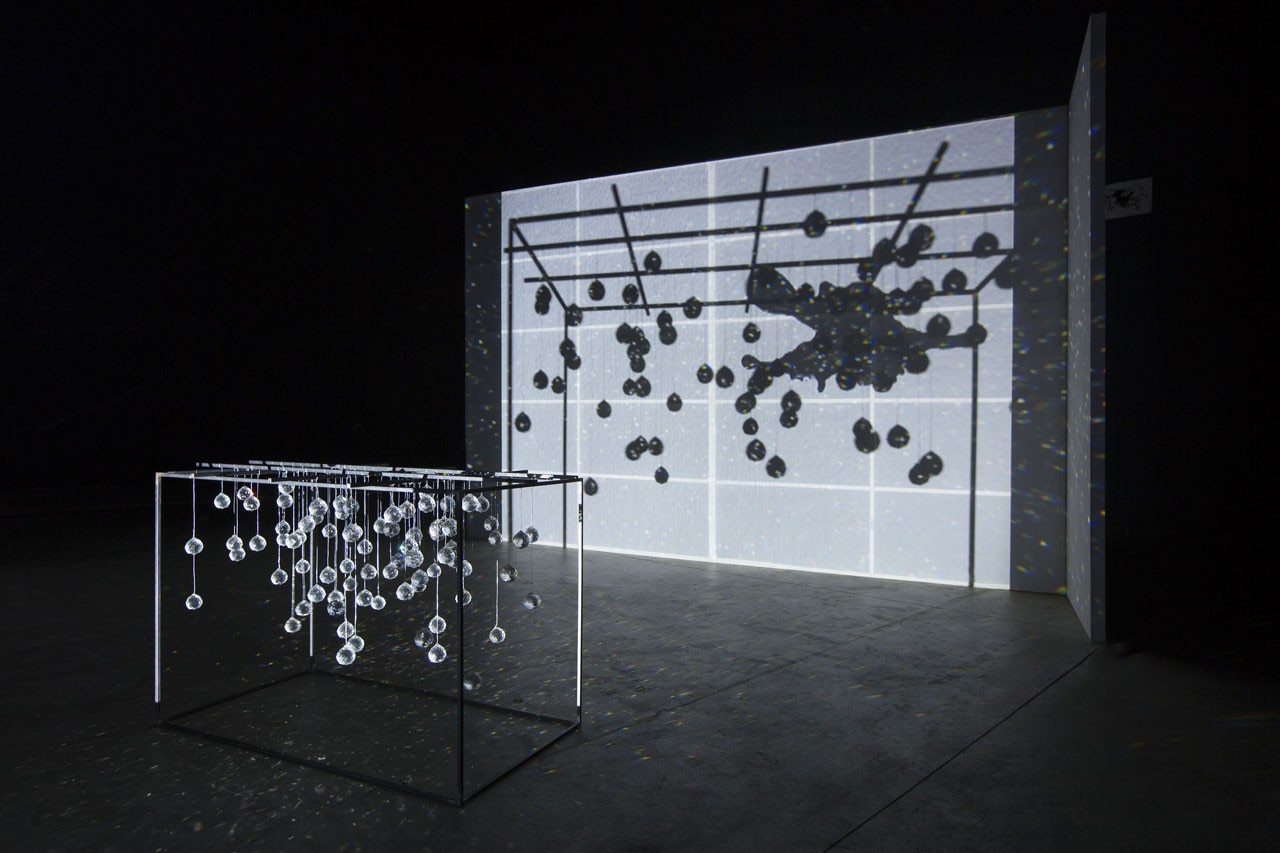
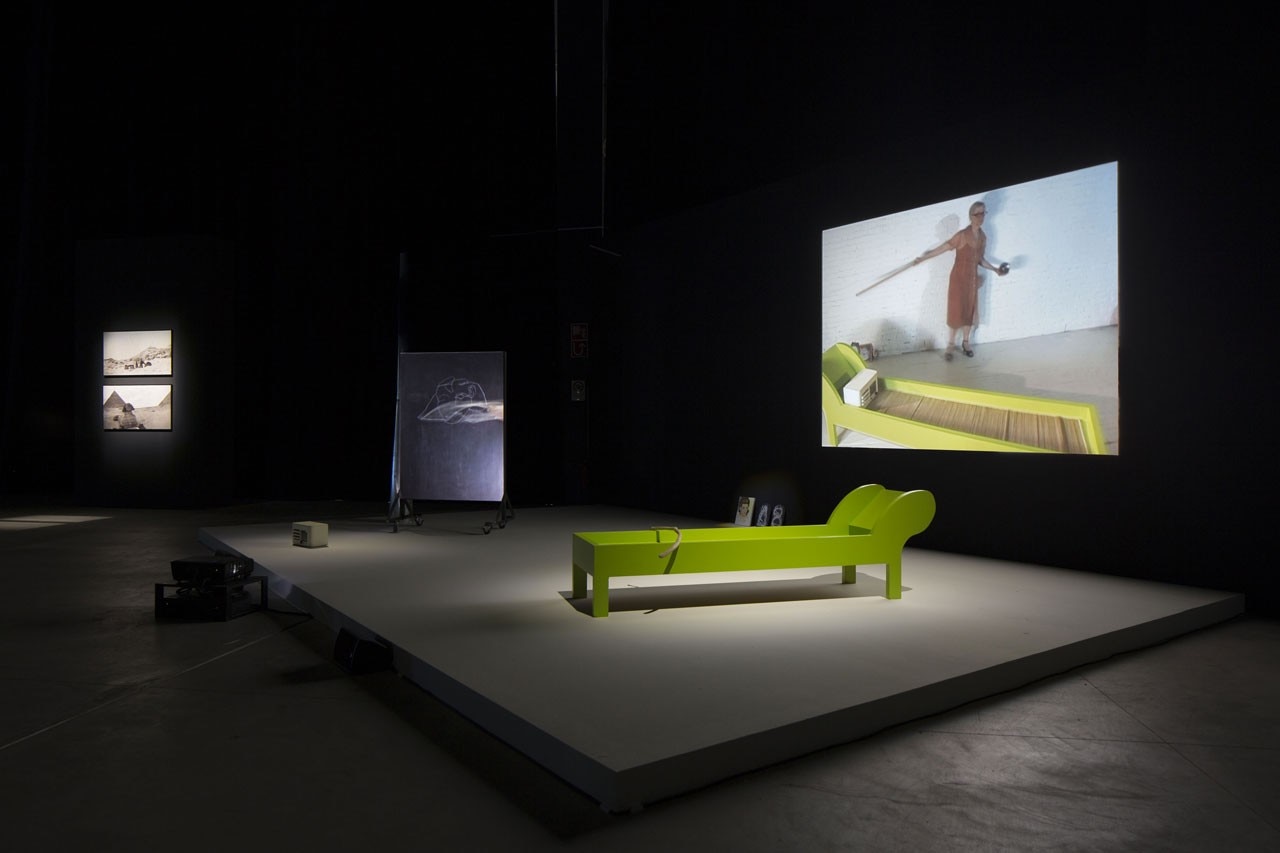
Also merging one into the other and acting in concert are the many works in this exhibition, masterfully arranged by Andrea Lissoni in the dark nave of the HangarBicocca. Twenty works in all, produced between the late 1960s and the present day. More than installations, they are complex relational machines – decentralised and out of control. Like the many trains of a long-tailed kite chasing each other and egging each other on before coming together in a bouquet worthy of a queen.
Joan Jonas trots from one work to the next in her different ages like a circus rider, before suddenly vanishing like Alice though the looking glass.
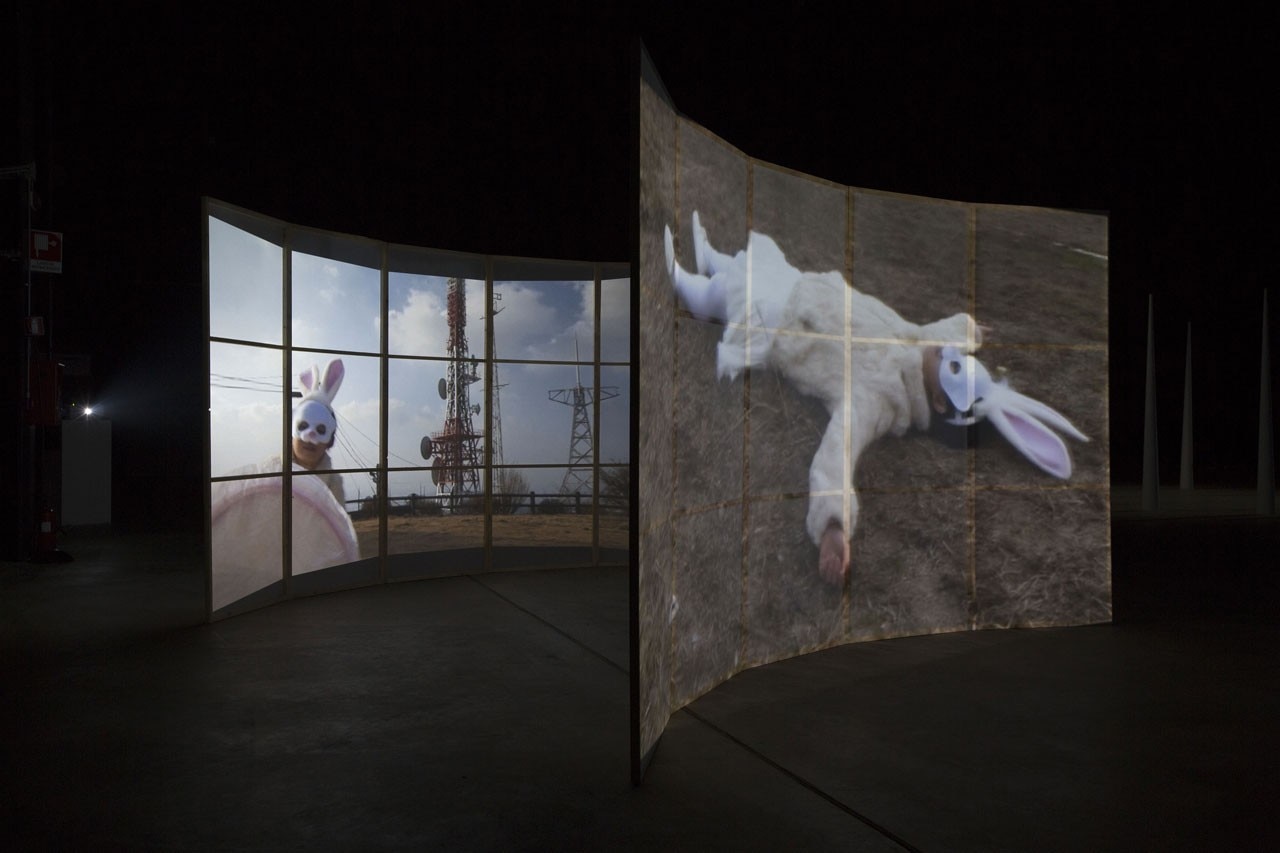
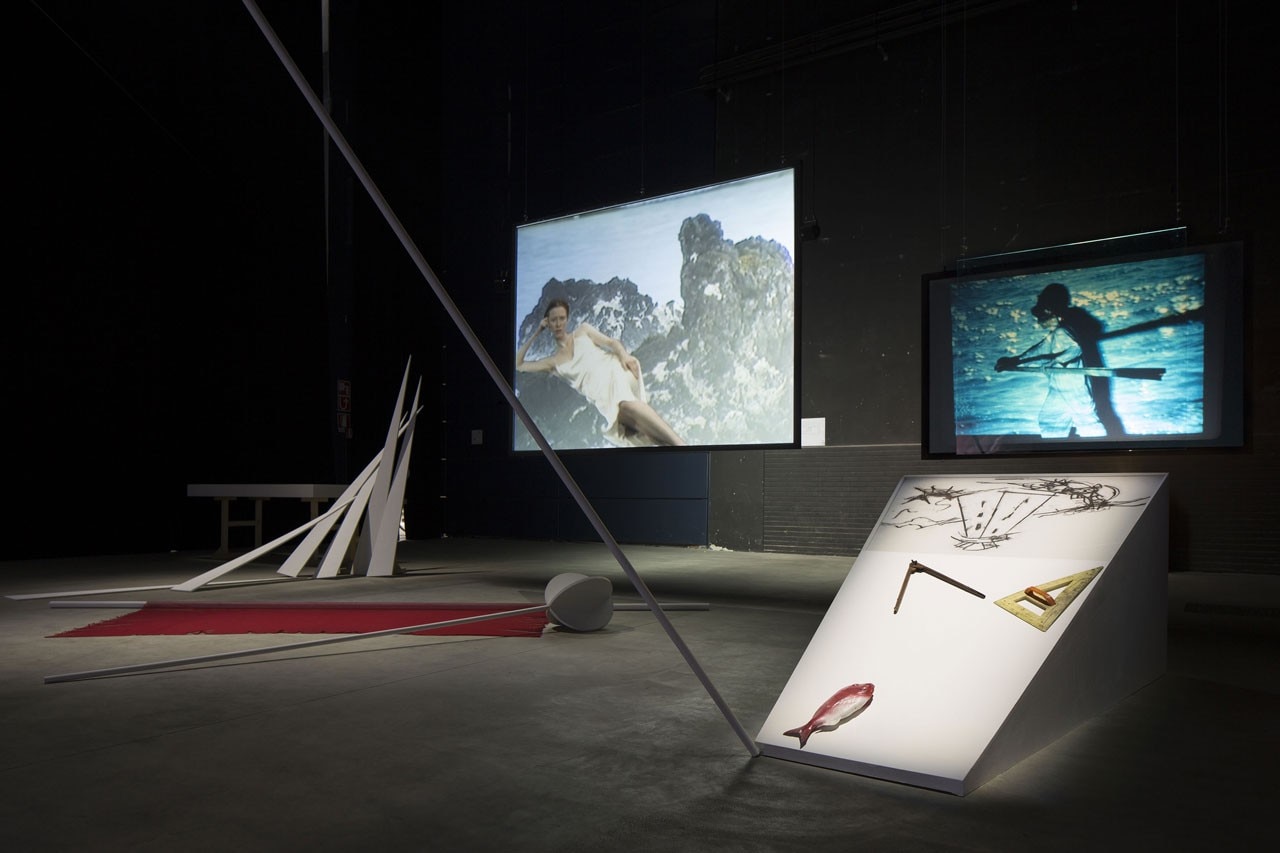
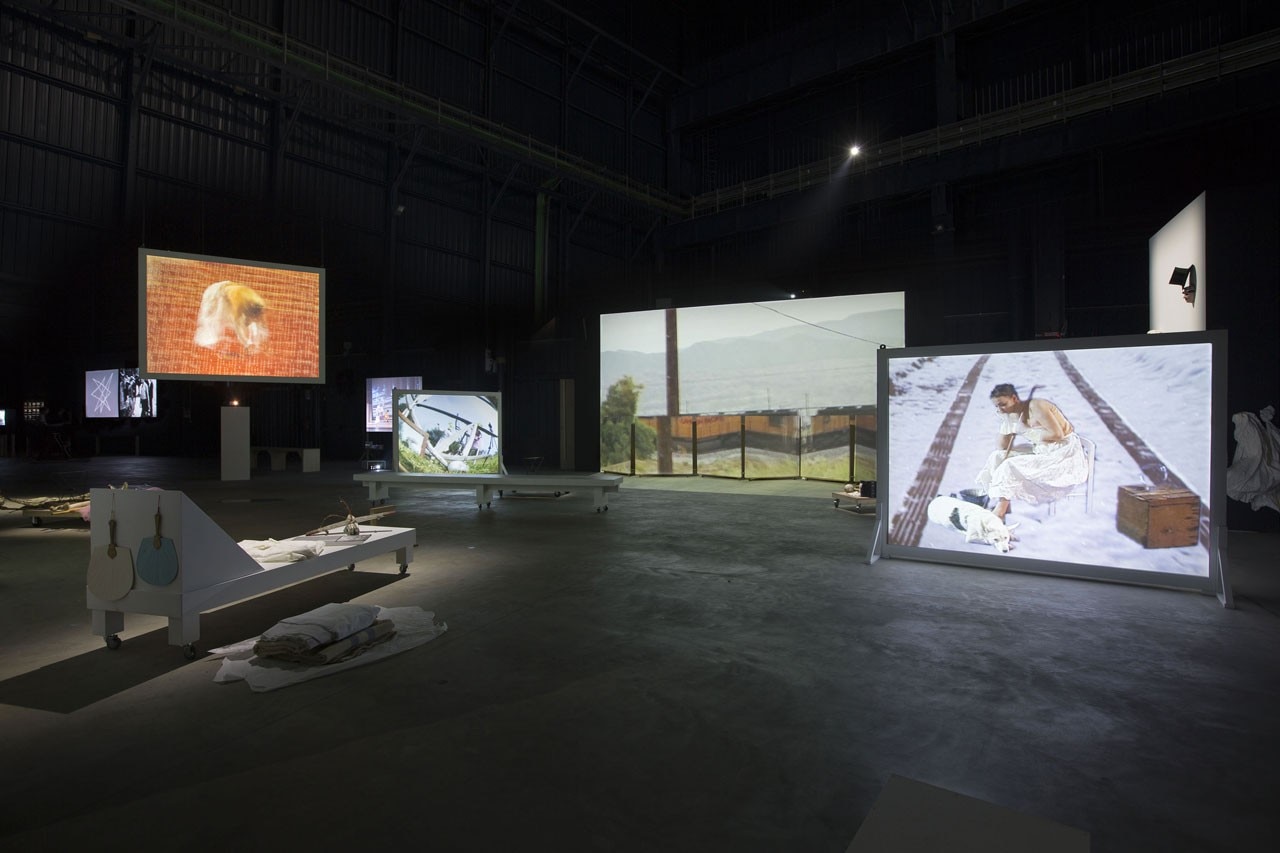
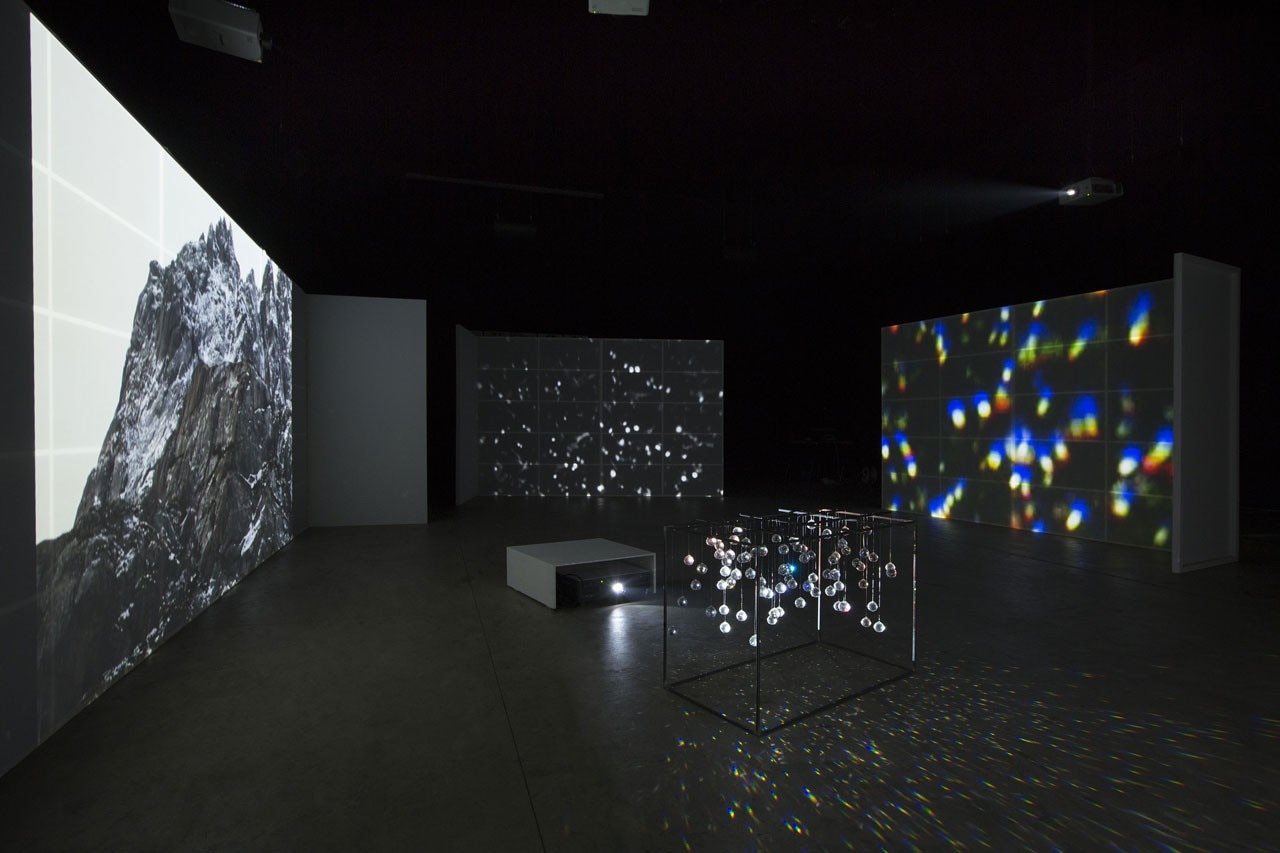
The barycentre of this promenade too long for the occasional visitor is Lines in the Sand (2002), a sprawling and kaleidoscopic installation that represents a shift, a point of no return (from the expression “to draw a line in the sand”). The narrating voice explains that we all know the story of Helen of Troy but only some followed her to Egypt. It then asks how she got there. The work is a detailed remix of a legend dating from the dawn of time (featuring a king, a queen and a milk-white bull) with recitals by the imagist poetess Hilda Doolittle, Tribute to Freud (1956) and Helen in Egypt (1961), stating that Helen never reached Troy and that the Greeks and Trojans actually fought over a surrogate, a phantom, an illusion.
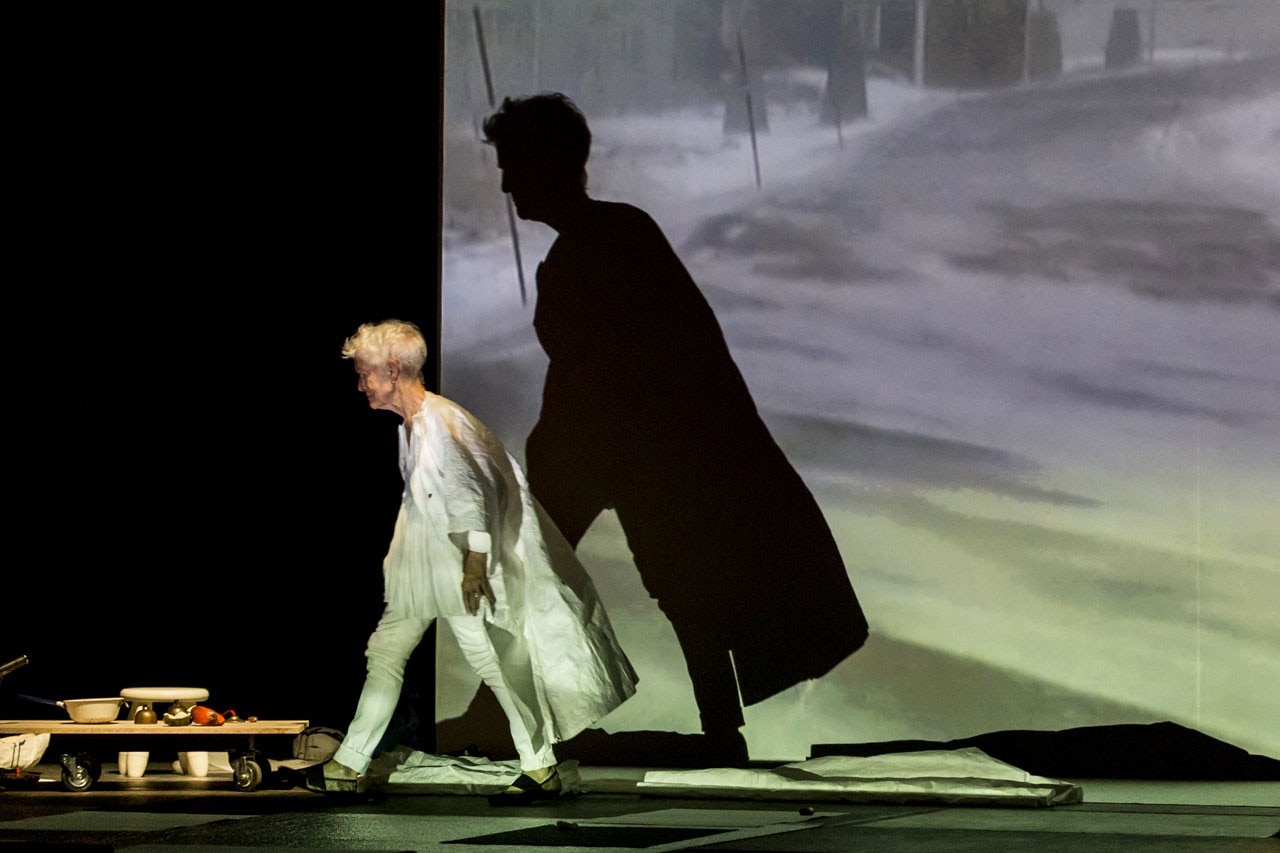
The result is a highly absorbing decoction of myth, visions and presences that obscures the so-called real, tangible world and only leaves illuminated the unconscious, pseudo-imaginary one. A strongly coloured hallucination in which a lime-green chaise longue (revisiting the psychoanalyst’s couch) invites us to a journey through the forgotten, the unobserved and the paranormal. Was Helen a star, a ship or a temple? Was the war inevitable? Who won? Who lost?” Sphinxes and spirals. Purple, blue, black, checked and striped garments. Flocks of sheep and rams. A pomegranate ruined by the winter; a pomegranate in flower. The sound of chalk on a blackboard. “I have seen the world through my dual lens, it looked as if all was broken, everything except that.” The Pyramid of Cheops. The glass pyramid of the Luxor Hotel. Everything goes round, stops, and starts going around again. A blink of the eye and the sphinx is upside down and glittering snowflakes seem to come to rest on the golden-sand fabric of Lines in the Sand.
until 1 February 2015
Joan Jonas. Light Time Tales
HangarBicocca, Milan


